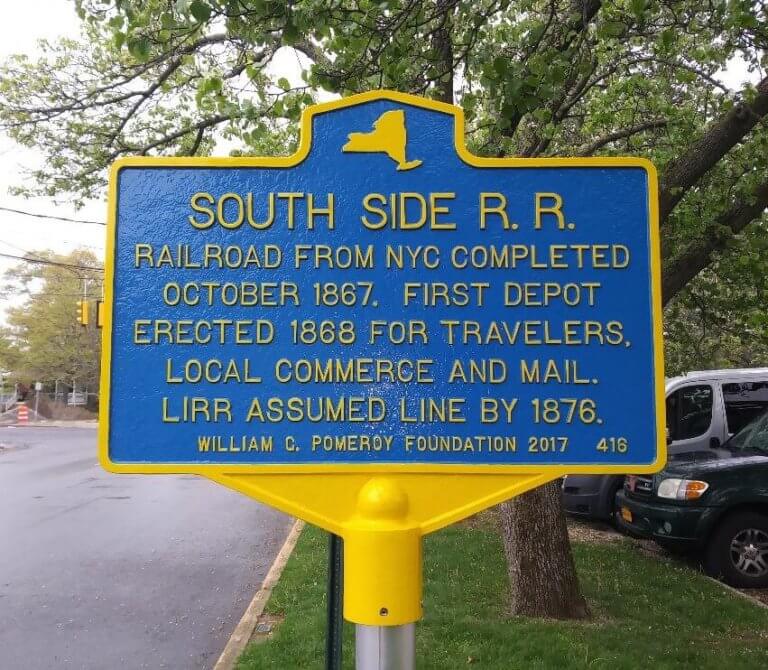SOUTH SIDE R.R.
- Program
- Subject
- Location
- Lat/Long
- Grant Recipient
-
NYS Historic
-
Transportation
- Ketchum Ave, North of W. Oak Street, Amityville, NY
- 40.67955, -73.420625
-
Town of Babylon History Museum
SOUTH SIDE R.R.
Inscription
SOUTH SIDE R.R.RAILROAD FROM NYC COMPLETED
OCTOBER 1867. FIRST DEPOT
ERECTED 1868 FOR TRAVELERS,
LOCAL COMMERCE AND MAIL.
LIRR ASSUMED LINE BY 1876.
WILLIAM G. POMEROY FOUNDATION 2017
Historically, railroads have played a major role in the development and growth of communities across the United States and the South Side Railroad is no exception. Completed in October of 1867, the South Side R.R. connected the rural communities of Long Island to the bustling metropolis of New York City. The first depot was erected in 1868 and served as a major hub for the transportation of travelers, goods, local commerce and mail. By 1876, the South Side Railroad became the Long Island Railroad (LIRR).
In Homes of the South Side Railroad of Long Island (1873) a publication of the South Side Railroad Company, Amityville appears listed on the chart of Passenger and Commutation Rates as the stop before Wellwood (Lindenhurst) with a local rate of $.85. Amityville is described as “situated some distance south of the track, quite closely built up, contain[ing] a number of fine buildings, including a recently erected public school which would be a credit to any community.” The portion of the village which was adjacent to the station, North Amityville, added 12 new buildings to support the enterprise, and was “well laid out, and offer[ed] many attractive building sites.” Amenities that attracted visitors and families included two Methodist churches, a private school, post office and telegraph station, as well as a number of stores.
It is also noted that less than a decade before there had been no existing railroad by which New Yorkers could find direct access to most of the homes and villages profiled in the book. Indeed, prior to 1876, the communities of Rockville Centre, Freeport, Amityville, Babylon, Islip and Patchogue could only be reached by stagecoach. As author George L. Catlin put it, “the South Side Railroad whistle has awakened them all to an unwonted life and vigor, and why may we not hope that ere another decade has elapsed, the same cheery whistle may re-echo from end to end of the good old Island of Nassau along a pathway traversed daily by thousands of New York business men?”

